Phillip’s Dog performs captivating music for historical and folk dances with enthusiasm and panache.
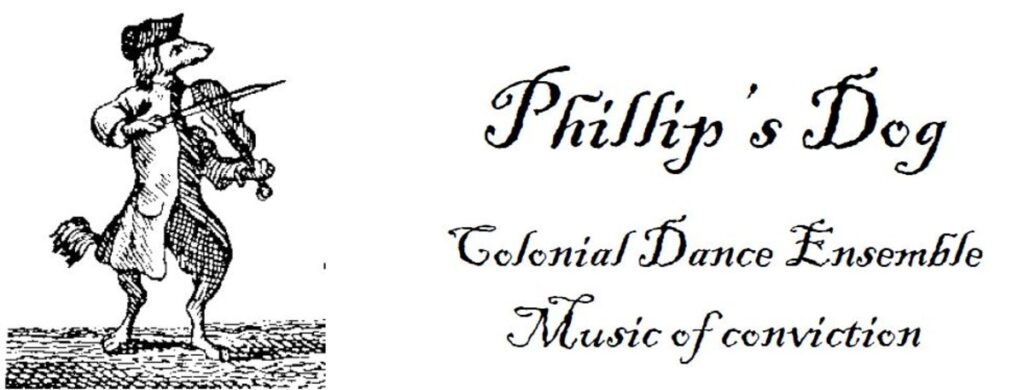
Phillip’s Dog is a unique ensemble, specialising in the dance music of early colonial Australia. However, the repertoire extends well beyond this period to include mediaeval tunes, dance music of Purcell and Bach, traditional folk tunes, and modern compositions These range from branles and jigs, through to hornpipes, waltzes, polkas, and reels. Our talented musicians play acoustic instruments: fiddle, viola, clarinet, whistle, bassoon, French horn, harp, piano and guitar.
The band is led by Roland Clarke (violin, viola) who arranges much of the music and enjoys creating harmonies to enhance the melodies. Roland and Isabel (harp, bassoon, whistle) went to California in 2020 to record a CD of dance music (Captain Cook’s Country Dances) in collaboration with The Whoots, one of the world’s leading exponents of English Country Dance music. They are joined by Joy Duncan (piano), Annalie Roux (clarinet), Nel Fulloon (violin) and Ron van Puten (guitar).
Phillip’s Dog plays for regular dances in Samford and Arana Hills as well as at special events, notably the annual Jane Austen Ball.
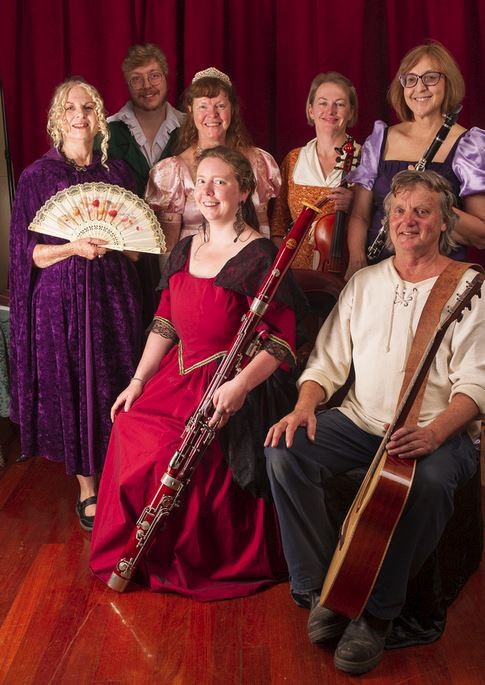
The story of Philip’s Dog
The name, Phillip’s Dog springs from the popular aquatic drama of 1816 entitled Philip and His Dog, or, Where’s the Child?

In the play of Philip and His Dog, the villain of the piece casts a child into the raging cataract, whereupon the heroic Newfoundland dog, Bruin, plunges from the cliff to rescue the infant. In the sensational climax, the dastardly villain throws himself into the water to escape justice and his pursuers, Bruin gives chase, and a desperate struggle ensures. Ultimately, Bruin triumphs by seizing the villain by the throat and drowning him.
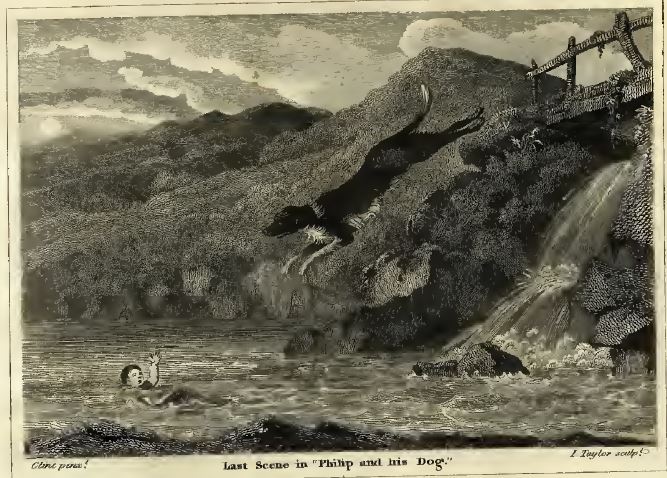
Before discovering the play of Phillip and his Dog, we conjectured that the title of the dance may have some connection with Governor Arthur Phillip and his notable description and illustration of a dingo. The governor also kept a greyhound, who accompanied him to New South Wales with the First Fleet.
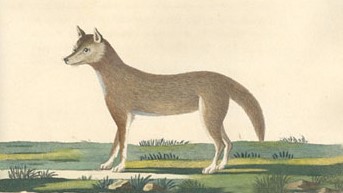
Philip’s Dog – music and dance
Instructions for the dance Philip’s Dog [or Phillip’s] appear in Goulding’s New Country Dances for 1817. This appears in a collection from Rackham’s 1817 Ladies’ Memorandum Book which was gathered into the notebook of Mary Ann Bossley, c.1815-1828 held in the Burdekin Family Papers in the State Library of New South Wales.

Goulding. New Country Dances For 1817. London.
Longways, duple minor
A1 1-8 Right hand star.
A2 1-8 Left hand star.
B1 1-4 1st couple, two hands joined, chassé down the set and back.
5-8 1st couple cast to 2nd place WHILE 2nd couple meet and lead up.
B2 1-8 All allemande.
The overture to the play also made its way to Australia in the bound album of Miss Margaret Hazlitt (1795 – 1817) and is now held in the Caroline Simpson Library and Research Collection, Museums of History NSW.
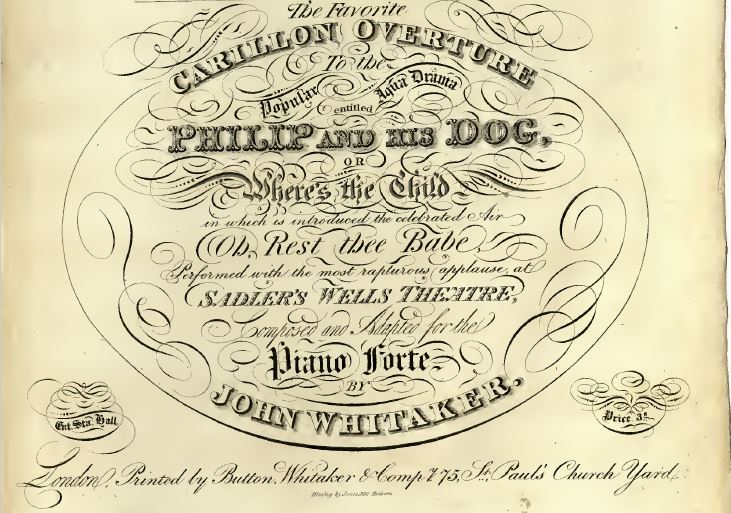
References
Grimaldi, Joseph, and Charles Dickens, (1838) Memoirs of Joseph Grimaldi. Philadelphia: Carey, Lea & Blanchard. https://catalog.hathitrust.org/Record/009734775/Cite
Harvey, Jane. From Kangaroo Dogs to Greyhounds. Retrieved from https://janedogs.com/from-kangaroo-dogs-to-greyhounds/ 2019.
Nicoll, Allardyce, (1830) A history of early nineteenth century drama 1800-1850. https://archive.org/stream/historyofearlyni030428mbp/historyofearlyni030428mbp_djvu.txt
Nuss, M. (2012). Aquatic Drama. The Encyclopedia of Romantic Literature.
Phillip, Arthur. The Voyage Of Governor Phillip To Botany Bay. John Stockdale. London. 1789.
Shoberl, F., Ackermann, R. (1816-1828). Repository of arts, literature, fashions &c. London:: Published by R. Ackermann … Sherwood & Co. and Walker & Co. … and Simpkin & Marshall …. https://catalog.hathitrust.org/Record/008696428/Cite
Williams, Michael, 1839-. Some London Theatres, Past And Present. London: S. Low, Marston, Searle, & Rivington, 1883. https://catalog.hathitrust.org/Record/001692648/Cite
The Era Almanack, (1868-1919). London: Era. https://catalog.hathitrust.org/Record/011813977/Cite
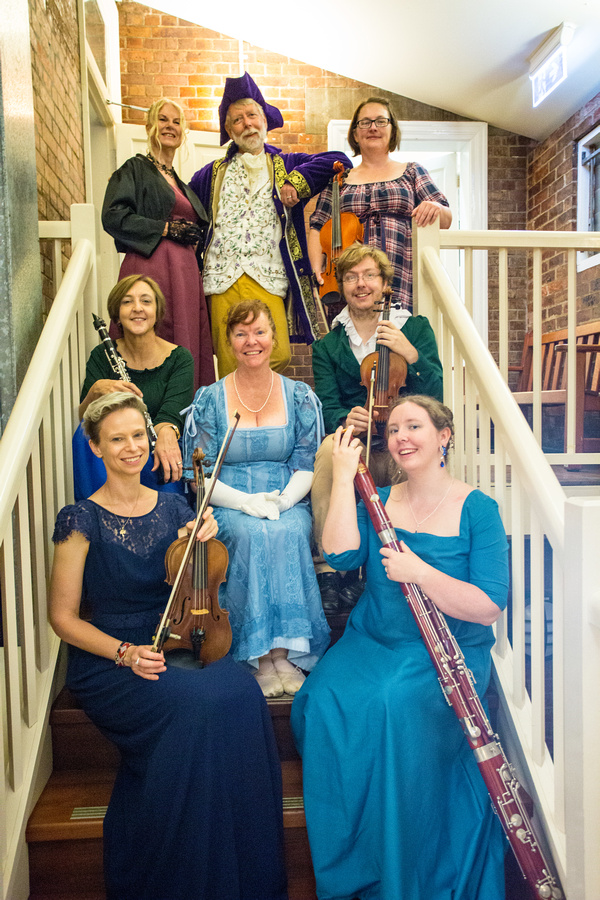


Pingback: Jane Austen Ball 2024 | Australian Historical Dance
Pingback: Regular dances in 2024 | Australian Historical Dance